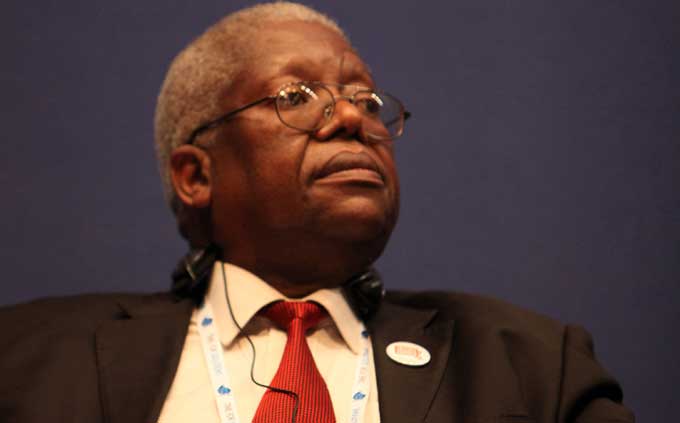
BY JACOB MUTEVEDZI
Today’s article focuses on the essential features of arbitration agreements, including their essential content. Counsel should master effective drafting of arbitration agreements in order to avoid any pathology and defects. By now, it should be clear to those who follow this column that you cannot have any arbitration in the absence of a valid arbitration agreement. This agreement has to be memorialised in an arbitration agreement, be it an arbitration clause in a contract or a submission agreement.
It is, therefore, critical to identify the essential content and features of the arbitration agreement. This is the only way to ensure the validity, effectiveness and enforceability of the agreement. The enforceability envisaged is enforceability in the arbitration process or through the courts, if necessary.
What then makes an arbitration clause or an arbitration agreement effective? What are the essential characteristics which confer effectiveness? Why do parties draft arbitration agreements? Parties conclude arbitration agreements because they want to oust the jurisdiction of national courts and have their conflict resolved by an arbitral tribunal of their own design.
The most vital function of the arbitration agreement is to communicate unequivocally the intention of the parties to remove their dispute from the jurisdiction of the courts and confer jurisdiction on an arbitration tribunal. This is, possibly, the principal objective. The parties need to record their intention to arbitrate rather than go to court. However, the parties have to consider numerous other matters. For instance, they must delineate the scope of the agreement. They must decide whether they wish to refer any and all disputes arising out of a contract to arbitration, or whether they want to narrow down the subject matter for referral to arbitration. They also have to decide whether they want to have an ad hoc or institutional arbitration.
An ad hoc arbitration requires careful design because everything that the parties cannot agree on will be resolved in terms of the law of the seat arbitration. Frequently such disagreements will be referred to the court of the seat. Of course, if an arbitral tribunal has already been constituted, that power lies with the tribunal. In an institutional arbitration, there is a plenty of administrative support provided by the institution itself and therefore the matter becomes less critical.
Therefore, there are three principal aspects which the parties need to effectively place on record, namely: the intention to arbitrate, the scope of the agreement to arbitrate and the decision of the parties as to whether they will arbitrate in an institution or in an ad-hoc arbitration. Other important considerations include, for example, the number of arbitrators, whether the parties prefer one or three arbitrators and how these arbitrators will be appointed. If they settle for institutional arbitration, they need to decide on the applicable institutional rules. If they opt for ad-hoc arbitration, again, they need to choose the applicable rules, decide on the language of the arbitration, elect the law that will govern the merit of the dispute and choose the law that will govern the arbitration clause itself.
In recent times, especially in relation to contracts of long duration like, for instance, construction contracts or energy contracts, multi-tiered or multi-stepped dispute resolution clauses have been introduced. These clauses provide for a gradual escalation of the dispute in terms of which the parties attempt to keep the dispute resolution as close as possible to the parties. This is achieved by resorting, in the first instance, to negotiation for a specific period, of say one month or two months. If negotiation fails, the parties go to mediation, which again will have a clearly defined period, typically about three months. The parties will only go to arbitration if negotiation and mediation fails.
- Chamisa under fire over US$120K donation
- Mavhunga puts DeMbare into Chibuku quarterfinals
- Pension funds bet on Cabora Bassa oilfields
- Councils defy govt fire tender directive
Keep Reading
It is of grave importance to provide clarity in a multi-tier dispute resolution clause, and in that sense, it is particularly crucial to have the steps defined both in terms of process and in terms of timelines. Absence of such clarity and definition of such clauses usually turn out to be long-winded and complicated. Typical defects include ambivalent language in relation to the seat of arbitration or the applicable law, or the scope of the arbitration agreement. Another quintessential defect is the tendency by incompetent draftsman to opt for both arbitration and litigation and declare that both the courts and the arbitral tribunal shall have exclusive jurisdiction. These types of clauses which conflict internally are normally resolved in favour of arbitration.
In practice, these defective arbitration clauses are called pathological clauses. “Pathological clauses” are defined in Fouchard, Gaillard, Goldman on International Commercial Arbitration (2009:261) as follows:
“It denotes arbitration agreements, and particularly arbitration clauses, which contain a defect or defects liable to disrupt the smooth progress of the arbitration. Arbitration agreements can be pathological for a variety of reasons. The reference to an arbitration institution may be inaccurate or totally incorrect; the agreement may appear to allow submission of disputes to arbitration to be optional; it may contain a defective mechanism for appointing arbitrators in that, for example, the chosen appointing authority refuses to perform that function; alternatively, the agreement might itself appoint arbitrators who have died by the time the dispute arises. The agreement may stipulate that the tribunal is to comprise three arbitrators where the dispute involves three or more parties whose interests differ; it may impose impracticable conditions for the arbitral proceedings (such as unworkable deadlines), or provide that certain issues (such as the validity of the contract) are not to be dealt with by the arbitrators, despite the fact that such issues are closely related to the dispute which the arbitrators are called upon to decide.”
Conclusion
It is important for parties to review their contracts carefully, and, preferably, settle for a simple but effective dispute resolution clause. Where parties are in doubt, it is advisable to choose one of the reputable institutions’ arbitration clauses and go adopt that. One can never go wrong with that.










